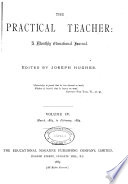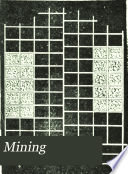 | William Paterson (Lieut.-Col.) - Military topography - 1882 - 206 pages
...half the product will be the area. ~. = Triangla To find the area of a trapezoid : — Multiply half the sum of the two parallel sides by the perpendicular distance between them for the area. — - — a = Trapezoid. To find the area of a trapezium : — Multiply the diagonal... | |
 | William Dodds - 1883 - 198 pages
...when the parallel sides and the perpendicular distance between them are given. RULE. Multiply half the sum of the two parallel sides by the perpendicular distance between them, and the product will be the area. If two straight "iT lines are of unequal ! / length, the average or mean... | |
 | William John Macquorn Rankine - 1883 - 454 pages
...by a pair of' parallel straight lines, and a pair of straight lines not parallel). Multiply the half sum of the two parallel sides by the perpendicular distance between them. 3. Triangle. RULE A. — Multiply the length of any one of the sides by one-half of its perpendicular... | |
 | William Waterston - 1884 - 314 pages
...acircleis3miles; then the square of 3 being 9, we have 9 X 3.1416 - 28-2744 square miles. 10. Area of a trapezoid: Multiply the sum of the two parallel sides by the perpendicular distance between them, and take half the product. Ex. The parallel sides are 4.32 feet and 5.48 feet, and the perpendicular 2.18... | |
 | Education - 1885 - 630 pages
...Answer one Question. I. State and prove the rule for finding the area of a trapezoid. Multiply half the sum of the two parallel sides by the perpendicular distance between them, and the product will give the area. sides. The area of ABCDs=$ AB and CD x perpendicular distance BG between... | |
 | Frank Eugene Kidder - Architecture - 1886 - 640 pages
...fib X (ce + i 2 FJ. '9-27 = area (Fig. 27). To Jind the area of a trrtpezoicl (Fig. 28). HULK. — Multiply the sum of the two parallel sides by the perpendicular distance between them, anil divide the product by 2. To compute the area of an irregular polygon. RULE. — Divide the polygon... | |
 | Alexander Wynter Blyth - 1890 - 762 pages
...added to 4,200, = 5,250. The rule for obtaining the area of a trapezoid is: multiply the sum of the parallel sides by the perpendicular distance between them, and half the product will be the area. The parallel sides in this instance are ac, ef; the distance between them is half the breadth, 7 feet;... | |
 | Theodore Graham Gribble - Surveying - 1891 - 482 pages
...area—- The area of a trapezoid is obtained as follows : o, . c FIG. 60. Rule 3. Multiply the sum of the parallel sides by the perpendicular distance between them, and half the product is the area. or logarithmically Log 2 A=log(AB + CD) + log h To reduce areas in Gunter's chains to... | |
 | Frank Eugene Kidder - Architecture - 1892 - 1032 pages
...product by 2. Or, ab X (ce + di) F'3.27 = area (Fig. 27). To find, the area of a trapczoid (Fig. 28). RULE. — Multiply the sum of the two parallel sides by the perpendicular distance between them, and divide the product by 2. To compute the area of an irregular polygon. RULE. — Divide the polygon... | |
 | Mines and mineral resources - 1894 - 330 pages
...as in previous problem. Fig. 49. PROB. V 1 1 . — To find the area of a trapezoid. Multiply half of the sum of the two parallel sides by the perpendicular distance between them, and p .c the product will be the / \ area. / \ \ Example. — Let ABCD (Fig. 49) be a trapezoid. The side... | |
| |